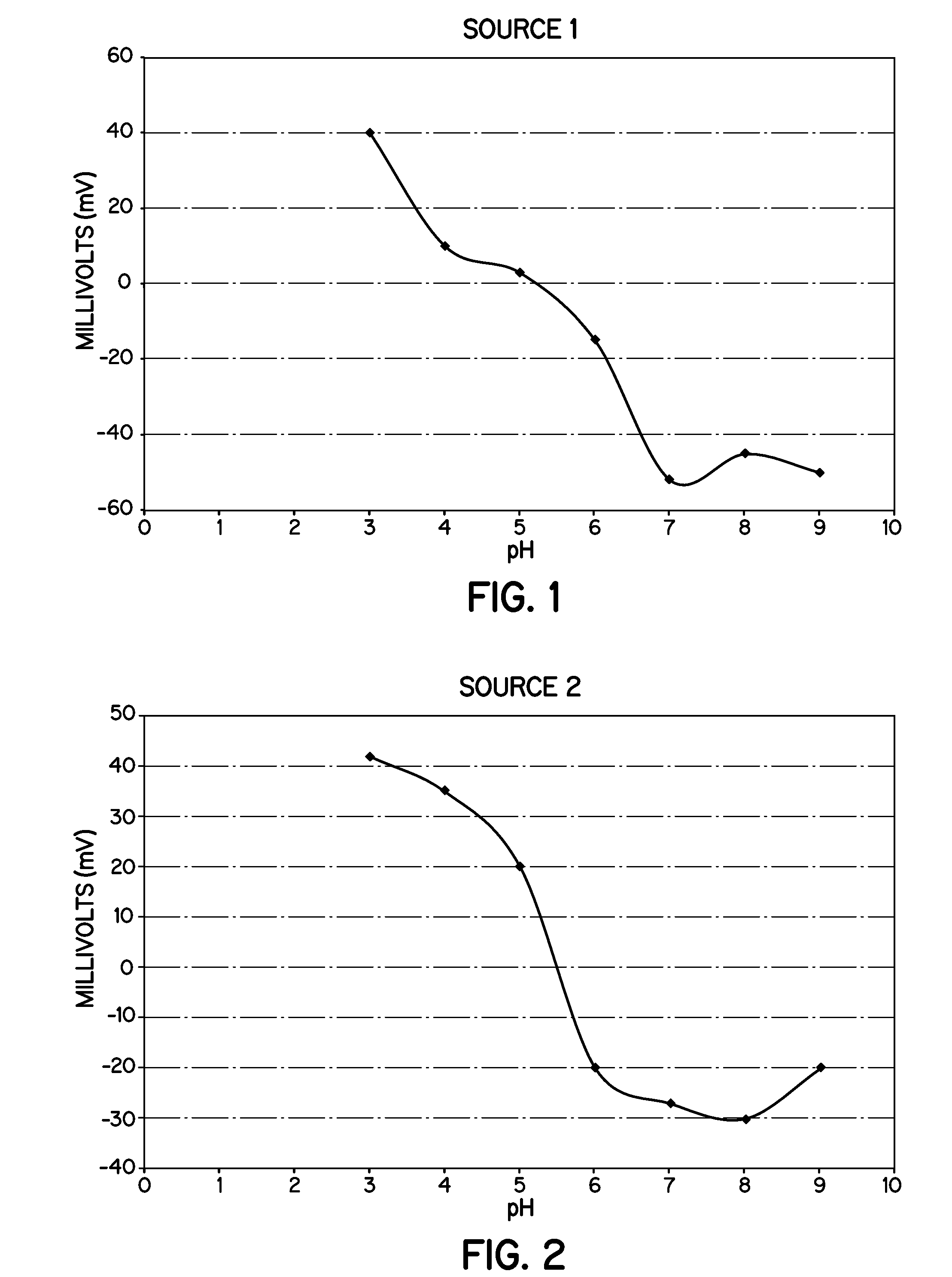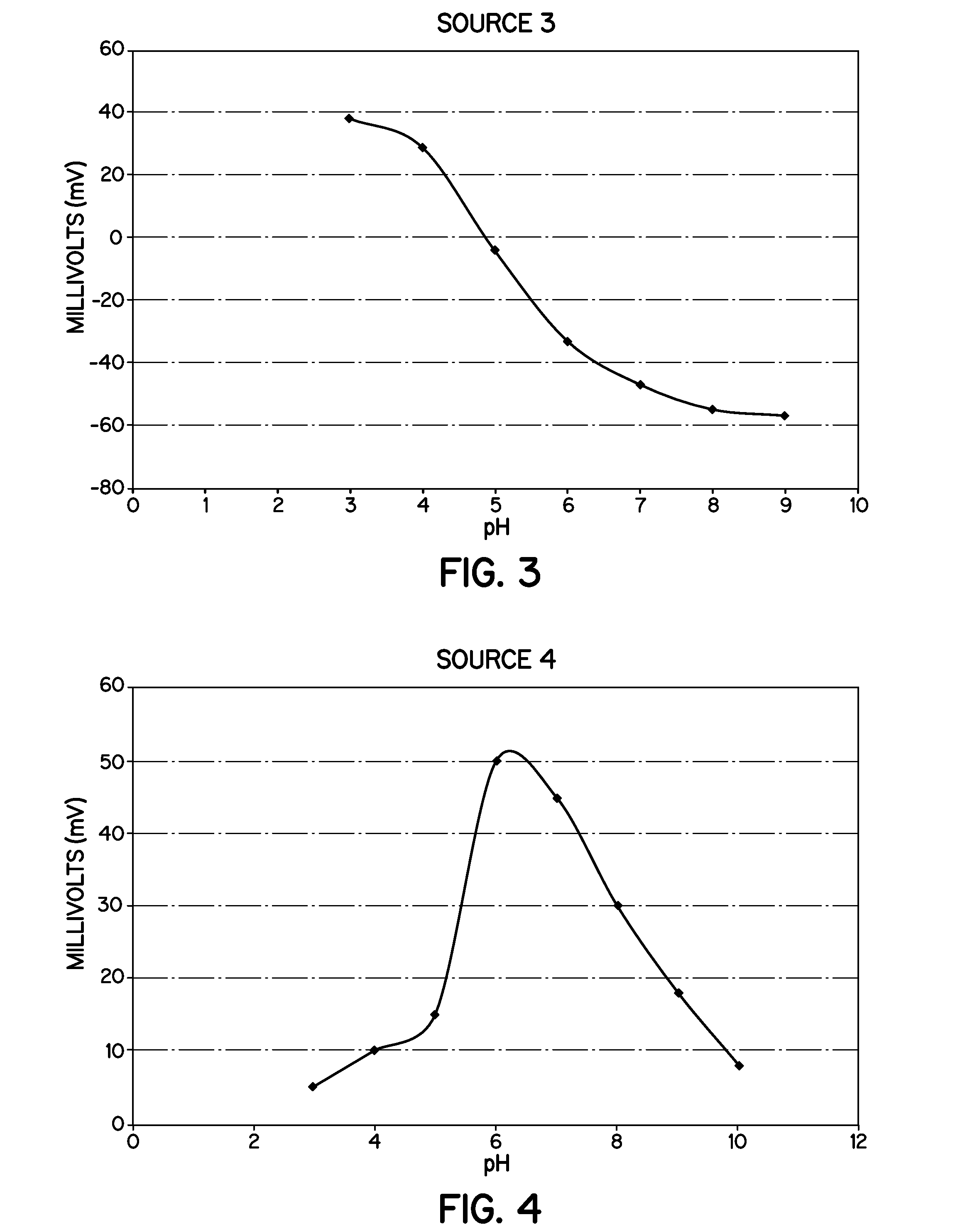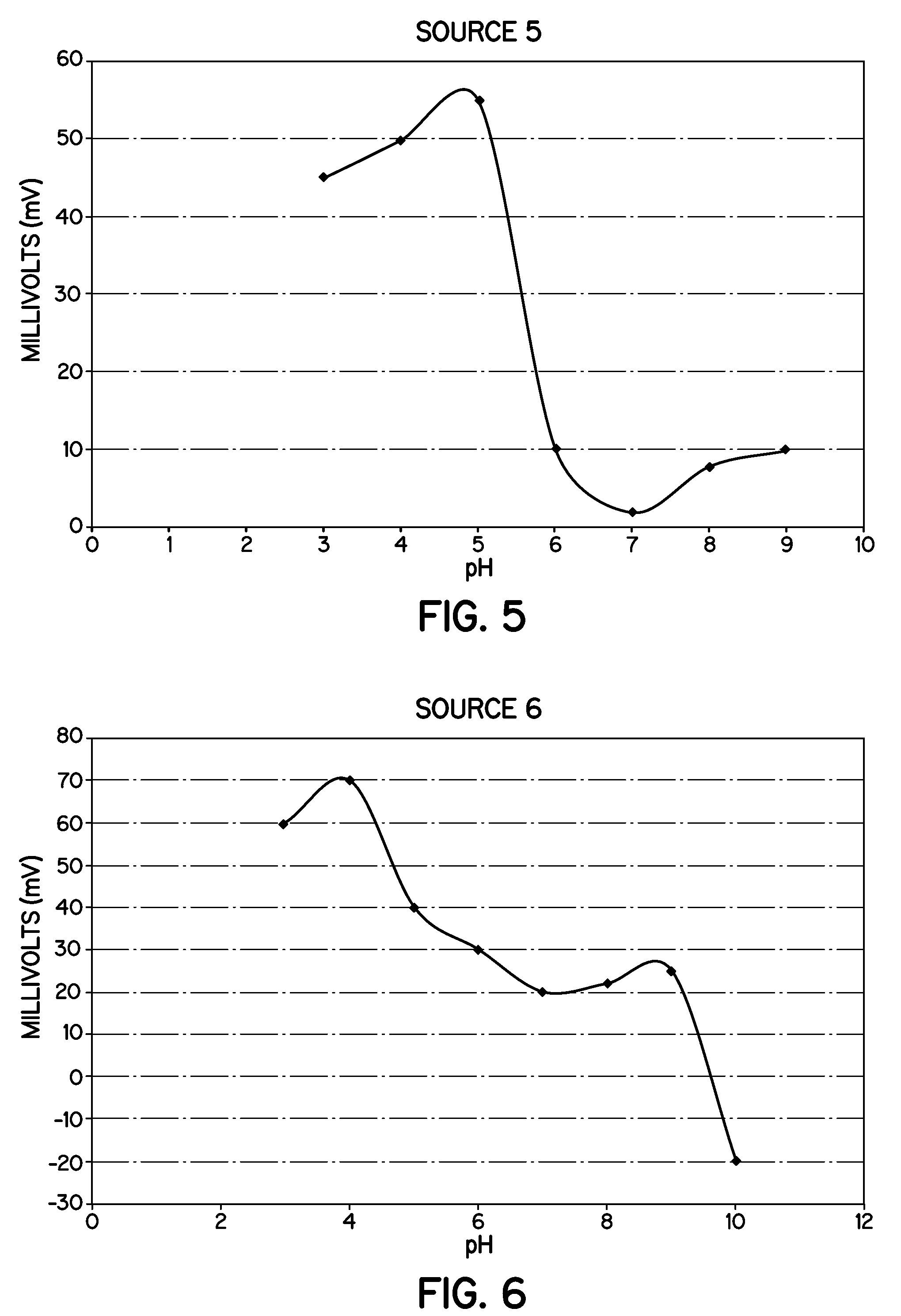Heat Stabilizers Containing Hydrotalcite Particles With Specific Zeta Potentials That Demonstrate Improved Processing and Performance In Molded Vinyl Compounds
a technology of hydrotalcite and hydrotalcite particles, which is applied in the direction of plastic/resin/waxes insulators, organic insulators, electrical appliances, etc., can solve the problems of affecting the heat stability of the polymer, affecting the product quality of the product, and affecting the quality of the product. , to achieve the effect of conferring heat stabilizing effect and preventing the problem of high hydrotalcite percentage of stabilizers
- Summary
- Abstract
- Description
- Claims
- Application Information
AI Technical Summary
Benefits of technology
Problems solved by technology
Method used
Image
Examples
example 1
Drop in Density During High Intensity Mixing of Hydrotalcite Containing Stabilizer
[0077]Test Method: The initial density of each source is measured and recorded via ASTM D 1895B method. Temperature and relative humidity is also recorded. In a 6 quart stainless steel mixing bowl, 400 grams of the hydrotalcite source or heat stabilizer being tested is placed and mixed for 20 minutes using a Kitchen Aid Professional 600 stand mixer with wire beater rotating 170 revolutions per minute (#8 speed). The density is again measured via ASTM D 1895B and recorded. The percent change in density of the sample mixed for 20 minutes compared to the initial value is determined.
[0078]Stabilizer formulation: 73% hydrotalcite variable, 24% zinc stearate, 3% dibenzoyl methane.
Analysis of results:
Relative Humidity 45%, Temperature 75° F.VariableAverage drop inHydrotalcite aloneHeat StabilizerModel A−8%−6%Model B−31% −23% Model C+5%+1%
example 2
Compaction of Hydrotalcite Containing Stabilizer in Bags, Drums and Sacs
[0079]Test method: A funnel is suspended above a 3 inch diameter cylinder. The funnel is filled with 200 grams of hydrotalcite variable to be tested and allowed to freely flow into the 3 inch cylinder. The hydrotalcite is leveled with a straight edge and a 5 pound weight which fits just inside the cylinder is placed to evenly rest on top of the hydrotalcite for a period of 24 hours. At the end of this period, the weight is removed and the hydrotalcite is poured onto a 60 mesh screen. The weight of the hydrotalcite retained on the screen is measured and the percent retained by weight is calculated.
Analysis of Results:
[0080]
Average Percent CompactionModel A 6%Model B10%Model C24%
example 3
“Rat Holing” or Collection of Hydrotalcite Near an Orifice During Transfer
[0081]Test method: Approximately 150 grams of the hydrotalcite variable is poured at a rate of about 5 grams per second down the side of a 6 inch diameter stainless steel funnel with a 1 inch orifice at the bottom. The funnel is observed for the build up of hydrotalcite near the orifice and the amount is compared to standards revealing no build up, slight build up, moderate build up and heavy collection. The amount of powder was rated as to slight build up (1), slight to moderate build up (2), moderate build up (3), moderate to heavy build up (4) and heavy build up (5).
Analysis of Test Results
[0082]
Build up near opening of funnelHydrotalcite sources from Model A2 slight to moderate build upHydrotalcite sources from Model B2 slight to moderate build upHydrotalcite sources from Model C4 moderate to heavy build up
PUM
| Property | Measurement | Unit |
|---|---|---|
| zeta potential | aaaaa | aaaaa |
| zeta potential | aaaaa | aaaaa |
| zeta potential | aaaaa | aaaaa |
Abstract
Description
Claims
Application Information
 Login to View More
Login to View More - R&D
- Intellectual Property
- Life Sciences
- Materials
- Tech Scout
- Unparalleled Data Quality
- Higher Quality Content
- 60% Fewer Hallucinations
Browse by: Latest US Patents, China's latest patents, Technical Efficacy Thesaurus, Application Domain, Technology Topic, Popular Technical Reports.
© 2025 PatSnap. All rights reserved.Legal|Privacy policy|Modern Slavery Act Transparency Statement|Sitemap|About US| Contact US: help@patsnap.com



